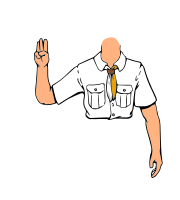Boy Scouts of the Philippines
| Boy Scouts of the Philippines | |||
|---|---|---|---|
 | |||
| Location | nation-wide, with the National Office in Manila | ||
| Country | Philippines | ||
| Founded | October 31, 1936 | ||
| Founders | |||
| Membership | 1,983,563 | ||
| Chief Scout | Rodrigo Duterte | ||
| National President | Wendel E. Avisado | ||
| Secretary General | Rogelio S. Villa | ||
| Affiliation | World Organization of the Scout Movement, Asia-Pacific Scout Region | ||
|
| |||
|
Website http://scouts.org.ph/ | |||

   | |||
The Boy Scouts of the Philippines, BSP, is the national Scout association of the Philippines in the World Organization of the Scout Movement. It was "granted Recognition as a Member Organisation of the Boy Scouts International Conference...with effect from 1–10–1946" by virtue of certification signed by J. S. Wilson, Olave Baden-Powell, and Daniel Spry.
For most of the late 20th century and into the 21st century, the Boy Scouts of the Philippines was among the largest Scout organizations in the world in terms of membership count (usually behind the Boy Scouts of America and the co-ed Gerakan Pramuka Indonesia), largely due to the organization's dependence on the Department of Education.
For most of its existence, the Boy Scouts of the Philippines was a private organization. However, this status has been officially and legally reversed with finality by Philippine Supreme Court decisions in 1991 ("government-controlled corporation"), 2011 ("public corporation or a government instrumentality"), and 2012.[1]
Laws and rulings relevant to the identity of the Boy Scouts of the Philippines organization
| # | Title | Description | Date | Authority |
|---|---|---|---|---|
| Commonwealth Act 111 | An Act to Create a Public Corporation to be Known as the Boy Scouts of the Philippines, and to Define its Powers and Purposes | Charter of the BSP organization | 31 October 1936 | Pres. Manuel Quezon |
| Presidential Decree 460 | Amending Certain Provisions of Commonwealth Act No. 111, Otherwise Known as the National Charter of the Boy Scouts of the Philippines | mandating the President of the Philippines as the Chief Scout of the Boy Scouts of the Philippines | 17 May 1974 | Pres. Ferdinand Marcos |
| G.R. No. 80767 | Boy Scouts of the Philippines v. National Labor Relations Commission | declaring the BSP a Government Owned or Controlled Corporation and a government instrumentality | 22 April 1991 | Supreme Court |
| Executive Order No. 509, s. 1992 | Amending Executive Order No. 495, Series of 1991, by Excluding From the Coverage Thereof the Boy Scouts of the Philippines and for Other Purposes | revoking conversion of the BSP into a private corporation | 4 March 1992 | Pres. Corazon Aquino |
| Republic Act 7278 | An Act Amending Commonwealth Act No. 111, as Amended by Presidential Decree No. 460, Entitled "An Act To Create a Public Corporation To Be Known as the Boy Scouts of the Philippines, and To Define Its Powers and Purposes," by Strengthening the Volunteer and Democratic Character of the Boy Scouts of the Philippines and for Other Purposes | reorganizing the BSP | 24 March 1992 | Pres. Corazon Aquino |
| Resolution No. 99-011 | Defining the Commission’s policy with respect to the audit of the Boy Scouts of the Philippines | subjecting the BSP organization to government audit by the COA | 17 August 1999 | Commission on Audit |
| G.R. No. 177131 | Boy Scouts of the Philippines versus Commission on Audit | Ruling "After looking at the legislative history of its amended charter and carefully studying the applicable laws and the arguments of both parties, we find that the BSP is a public corporation and its funds are subject to the COAs audit jurisdiction." | 7 June 2011 | Supreme Court en banc |
| Memorandum Order No. 2013-42 | Classifying the Boy Scouts of the Philippines and the Girls Scouts of the Philippines as Sui Generis GOCCs | 5 November 2016 | Office of the President, Governance Commission for Government Owned or Controlled Corporations |
Timeline
In 1910, the first troops organised by Elwood Stanley Brown, Physical Director of the Manila YMCA. In 1912, Elwood Stanley Brown recognised by Baden-Powell as "Chief Scoutmaster." In 1913, troops were organised by Mark Thompson, Antonio Torres, Domingo Ponce, and Francisco Varona. In 1914, the Lorillard Spencer Troop organised in November in Zamboanga City by Sherman L. Kiser. In 1921, Scouting started at Silliman Institute under the auspices of its church. They applied for registration to BSA National Headquarters, New York, in 1922, and received their document in January 1923 (some eight or nine months before the creation of the BSA Philippine Islands Council No. 545). In 1923, the Rotary Club established the Boy Scouts of America Philippine Islands Council No. 545 in October. In 1931, experimentation was conducted in Sea Scouting and Cub Scouting. In 1933, the Philippines made first participation in an international Scout event, with the BSA Philippine Islands Council delegation embedded in the BSA contingent to the 4th World Scout Jamboree in Budapest, Hungary. In 1934, Rover Scouting was introduced. The BSA Shanghai District was placed under the supervision of the BSA Philippine Islands Council No. 545. In 1936, the Boy Scouts of the Philippines was established by a legislative act. The first BSP President and Chief Scout was Josephus Stevenot. In 1937, the BSA Philippine Islands Council No. 545, meeting in October, decided on the handover of its properties and responsibilities to the nascent BSP. In 1938, the BSP was inaugurated by Pres. Manuel Quezon on January 1, and started functioning. Exequiél Villacorta was appointed the first "Chief Scout Executive" of the Boy Scouts of the Philippines, in imitation of the BSA Chief Scout Executive. In 1947, the BSP made its first participation in an international event, with the BSP contingent to the 6th World Scout Jamboree in Moisson, France. In 1953, the first Wood Badge course was conducted at BSP Camp Gre-Zar in Novaliches, Quezon City. In 1954, the first BSP National Scout Jamboree was held at Rolling Hills, Balarâ, Quezon City. Dr. Mariano Villarama de los Santos served on the World Scout Committee from 1957 until 1959. In 1959, the 10th World Scout Jamboree was held at the National Scout Reservation, University of the Philippines, Los Baños, at the foot of Mount Makiling, in the province of Laguna. This was the first World Scout Jamboree outside Europe and Canada. In 1960, the Cub Scout program was revised to replace American symbols (e.g. Bobcat, Bear Cub, Wolf Cub, Lion Cub) with Philippine motifs (e.g. Kawan, Mother Usa, Chief Usa, Young Usa, Lauan, Molave, Narra, Leaping Usa). In 1961, the Boy Scout program was revised to replace American symbols (e.g. Eagle) with Philippine motifs (e.g. Maginoo, Jose Rizal). In 1963, 24 members of the BSP delegation to the 11th World Scout Jamboree in Marathon, Greece, died in a plane crash in the sea off the coast of Mumbai, India. Streets in the South Triangle District of Quezon City were later named in their memory. In 1968, Boy Scouts, Rovers, and Scouters joined in the search-and-rescue operations for victims of the Ruby Tower collapse in August. For the services rendered by the Scouts, the BSP organization was awarded by President Ferdinand Marcos with a Presidential Gold Medal the following year. In 1970, Senior Scouting officially launched as part of the BSP program. It has three sections: Air (grey uniform), Land (dark green), and Sea (white). In 1971, Ambassador Antonio C. Delgado was elected Chairman of the World Scout Conference, becoming the first Filipino to hold this position. In 1972, BSP membership hit the one-million mark. In 1973, the Golden Jubilee Jamboree and first Asia-Pacific Jamboree was held at the National Scout Reservation, University of the Philippines, Los Baños, Laguna. The jamboree song, "Kapatirang Paglilingkod," reflected the Bagong Lipunan regime of President Ferdinand Marcos. In 1974–75, the Cub Scout name is Philippinised: the Pilipino alphabet at that time did not include the letter C, so "Cub" was replaced with "Kab." However, since "kab" was not actually a Pilipino word, it was contrived as an acronym for "Kabataan Alay sa Bayan" and written in all caps. In 1975–86, in compliance with the orders of Pres. Marcos, the Boy Scouts of the Philippines was renamed "Kapatirang Scout ng Pilipinas" (literally meaning Scout Brotherhood of the Philippines). The Scout age groups were reduced from four to two. The Scout Oath and Scout Law were revised. A new Scout badge was devised. President Ferdinand Marcos took the title of Chief Scout, the first Philippine head of state to hold the title. In 1986, the Golden Jubilee of the Boy Scouts of the Philippines (1936–86). In the aftermath of the People Power Revolution, the name Kapatirang Scout ng Pilipinas was abandoned and the organization reverted to its original name "Boy Scouts of the Philippines." In 1990–91, a program was created for pre-school boys and named KID Scouting. Since "kid" is English and not Filipino, it was contrived as an acronym for "Kabataang Iminumulat Diwa" and written in all caps. In 1991, the 12th Asia-Pacific Jamboree, Philippine Scouting Center, University of the Philippines, Los Baños, Laguna. In 1992, the old BSP badge was reinstated. In 1993, the Philippines hosted the first ASEAN Scout Jamboree. In 1997, the 2nd World Scout Parliamentary Union held in Manila. In 1999, the first Venture Scout Jamboree was held on Ilian Hills, Iriga City, Camarines Sur, Bicol. In 2007, the BSP observed the world centennial of the Scout Movement. In 2009–10, the BSP hosted the 26th Asia-Pacific Jamboree, 28 December 2009 – 3 January 2010. This was the third APR Jamboree in the Philippines. In 2011: The BSP celebrated 75 years of Philippine Scouting. In 2013, the National Peace Jamboree held on Mount Makiling in Laguna, in Capitol Hills Scout Camp in Cebu, and the BSP's Camp Malagos in Davao. In 2014: Centennial (1914–2014) of the defunct Lorillard Spencer Troop. A "Centennial Jamboree" was held in three venues: Marikina City (Luzon), Cebu City (Visayas), and Zamboanga City (Mindanao).
Memorials
See: Scouting memorials in the Philippines.
Program sections
- KID Scouting (Kabataang Iminumulat Diwa) is for boys 3 to 4 years old (in pre-school, but not kindergarten). They wear a light blue neckerchief.
- KAB Scouting (Kabataan Alay sa Bayan) is for boys 5 to 10 years old (kindergarten through grade 3). They wear a yellow neckerchief.
- Boy Scouting is for boys 10 to 12 years old (grades 4 through 6). They wear a green neckerchief.
- Senior Scouting is for boys and girls 13 to 17 years old (grades 7 through 10). They wear a red neckerchief.
- Rover Scouting is for young men and women 17 to 24 years old (grades 11-12 and college level). Rovers aged 24 and above are called Rover Peers. They wear a navy blue neckerchief.
KAB Scout advancement program
- Young Usa
- Growing Usa
- Leaping Usa
Boy Scout advancement program
- Membership Badge
- Tenderfoot Scout
- Second Class Scout
- First Class Scout
Senior Scout advancement program
- Membership Badge
- Explorer
- Pathfinder
- Outdoorsman / Airman / Seaman
- Venturer / Air Venturer / Sea Venturer
- Eagle Scout
Rover advancement program
- Yellow Quadrant
- Green Quadrant
- Red Quadrant
- Blue Quadrant
- Chief Scout's Nation Builder
Scout ideals
Vision
- Foremost in preparing the youth to become agents of change in communities, guided by the Scout Oath and Law.
Mission
- To help the youth develop values and acquire competencies to become responsible citizens and capable leaders anchored on the Scout Oath and Law.
Scout Oath
On my honor, I will do my best
- To do my duty to God and my country, the Republic of the Philippines, and to obey the Scout law.
- To help other people at all times,
- To keep myself physically strong, mentally awake, and morally straight.
Panunumpâ ng Scout
Sa ngalan ng aking dangál ay gagawín ko ang buóng makakaya
- Upang tumupád sa aking tungkulin sa Diyós at sa aking Bayan, ang Republiká ng Pilipinas, at sumunód sa Batás ng Scout;
- Tumulong sa ibáng tao sa lahát ng pagkakataón;
- Pamalagiing malakás ang aking katawán, gisíng ang isipan at marangál ang asal.
Scout Law / Batás ng Scout
| A Scout is | Ang Scout ay |
|---|---|
| Trustworthy | Mapagkakatiwalaan |
| Loyal | Matapát |
| Helpful | Matulungín |
| Friendly | Mapagkaibigan |
| Courteous | Magalang |
| Kind | Mabaít |
| Obedient | Masunurin |
| Cheerful | Masayá |
| Thrifty | Matipíd |
| Brave | Matapang |
| Clean | Malinis |
| Reverent | Maka-Diyós |
Senior Scout Code
As a Senior Scout,
- I will live the Scout Oath and Law and the Senior Scout motto and slogan.
- I will be familiar with the Constitution of the Philippines especially my rights and obligations as a Filipino citizen.
- I will share in my responsibilities to my home, school, church, neighborhood, community and country.
- I will deal fairly and kindly with my fellowmen in the spirit of the Scout Law.
- I will work to preserve our Filipino heritage, aware that the privileges I enjoy were won by hard work, sacrifice, clear thinking, and faith of our forefathers.
- I will do everything in my power to pass a better Philippines to the next generation.
References
- ↑ "The BSP is a government controlled corporation by virtue of the Supreme Court decision dated June 7, 2011. The decision became final and executory on March 14, 2012 when the Supreme Court denied with finality the motion for reconsideration filed by the BSP." – Commission on Audit, Boy Scouts of the Philippines Annual Audit Report for CY 2012.
External links
| Wikimedia Commons has media related to Boy Scouts of the Philippines. |
- The Official Web Portal of the Boy Scouts of the Philippines
- Scout Advancement Resource Center, Boy Scouts of the Philippines
- BSP Scouting Documents Resource Center, Boy Scouts of the Philippines